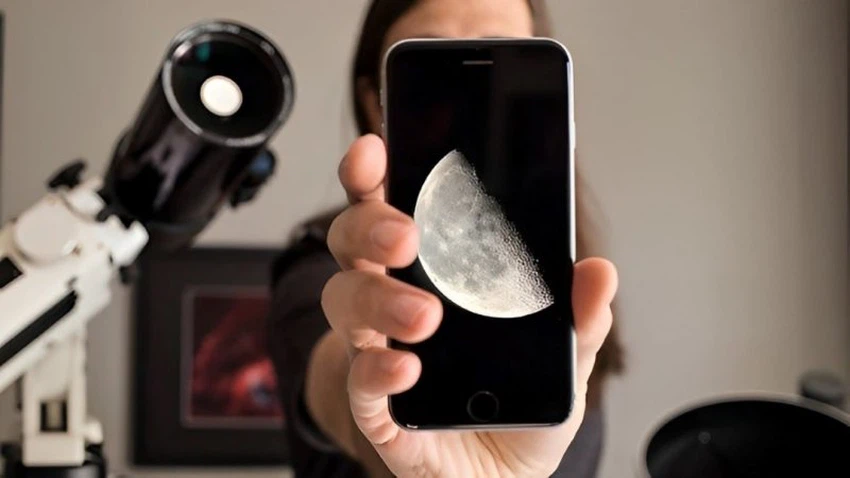How to Take Pictures of the Moon Using a Smartphone
Arab Weather - Photographing the moon using smartphones has become more sophisticated thanks to advanced technical capabilities. This guide aims to provide practical steps to achieve amazing results in photographing the moon using your phone, while providing professional tips and techniques.
Basic Techniques for Photographing the Moon Using Android Phones
Using Manual Mode on Android Phones
To achieve a stunning image of the moon:
- Phone stability: Use a tripod to avoid shaking.
- Manual Mode Adjustment: Use Professional Mode to control ISO, shutter speed, and focus settings.
- Keep ISO low (100-200) to reduce noise.
- Take photos: Take multiple photos with different settings to get the best result.
- Zoom wisely: Use optical zoom instead of digital, cropping later to improve detail.
-
Use specialized applications
You can enhance your shooting experience with apps like LunaSolCal:
- Planning: Know the moonrise and sunset times and phases.
- Camera Setup: Use Night or Manual mode.
- Take photos: Use a timer to reduce shake and adjust brightness and sharpness with a photo editing app.
-
Use a dedicated magnifying glass.
- Attach a zoom lens to enhance details.
- Use a tripod for stability.
- Adjust focus manually for complete clarity.
- Explore suitable exposure modes (manual or automatic).
Additional tips for photographing the moon
- Choosing the right time: Photograph the moon during the first or last quarter, when it is most visible.
- Avoid digital zoom: Use optical zoom or a dedicated lens.
- HDR Mode Experience: Helps balance the light of the moon and sky.
- Check the moon phases: Try photographing it in different phases for varied results.
Photographing the moon with your Android phone is a combination of skill and creativity. Whether you use manual mode or a zoom lens, the key is to keep experimenting to get great results.

Photographing the Moon with iPhone
iPhones feature advanced imaging technologies that make them an ideal choice for capturing stunning moon shots. To take advantage of their capabilities:
- Use Night Mode: Night Mode automatically turns on in low-light conditions to enhance image details and reduce noise.
- Adjust camera settings manually: Use professional photography apps like Halide or ProCamera to manually adjust ISO, shutter speed, and focus settings to get the perfect moon shot.
- Use a tripod: Mount your iPhone on a tripod for greater stability while shooting, especially when using the zoom.
- Take advantage of zoom lenses: Modern iPhones, such as the iPhone 15 Pro Max, support optical zoom up to 5x, allowing you to take high-quality close-up photos of the moon.
- RAW Capture: If your device supports RAW shooting, use this feature to edit photos later and preserve moon details.
- Try specialized apps: such as NightCap Camera, which allows custom settings for night and moon photography, and improves the quality of images.
- Edit photos: Use built-in photo editing apps or apps like Lightroom or Snapseed to adjust sharpness, brightness, contrast, and bring out the moon's details.
With advanced technologies in iPhone devices, you can achieve stunning moon photos with quality that rivals professional cameras.
Frequently Asked Questions
- What do I do if the moon image appears blurry?
Use a tripod and make sure you have the proper focus and settings.
- Do I need a specific magnification to photograph the moon?
It depends on your camera specifications. It is best to use an optical zoom or a dedicated lens.
See also:
The last full moon in 2024.. The "cold moon" adorns the skies of the Arab world on this date
Full Moon Calendar 2024 We will witness 12 full moons, including 4 supermoons
Arabia Weather App
Download the app to receive weather notifications and more..



